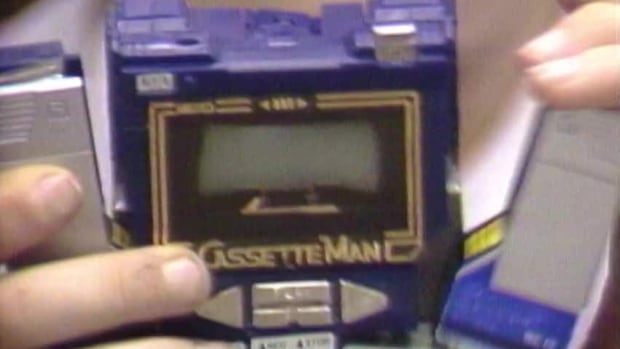Trendy toys and games that '80s kids wanted for Christmas
From robots in disguise to dolls from the cabbage patch, marketers always had toys to sell

Kids always know what's cool, and they tend to try to bring that information to their parents' attention around Christmas — as does the media.
Because year after year, there are news stories about the most sought-after toys and the lengths parents will go to, in order to get them for their kids.
Here are a few of those trendy toys that captured the attention of '80s kids who, in turn, told their parents about them.
The start of an electronic revolution
In the late '70s, parents were already hearing about electronic toys and some very early video-game systems.
By 1980, in fact, these toys were already making up about half the total sales of toys in Canada — and toymakers were marketing a growing array of these products to consumers.
"This year there are more than 200 to choose from," reporter Lorraine Kimmel told viewers on The National about four weeks ahead of Christmas that year, noting that such toys had only been in existence for a few years.
The Rubik's Cube craze
Lots of kids had Rubik's Cubes before Christmas arrived in 1981, but there were still lots more who wanted them.
Days before the Dec. 25 holiday, The National ran an item about some students at a Vancouver private school who were able to solve the cubes rapidly — some in less than a minute's time.
But that didn't mean the rest of us didn't need a little help in solving the now-iconic puzzle cubes.
"For those who simply cannot master Rubik's Cube, a number of bookstores, department stores and supermarkets are stocking books with solutions," reporter Debora Sweeney told viewers. "They're doing a booming business this Christmas."
A shortage of smurfs
On TV, the Smurfs were always upbeat. But things were a little more stressful for Nova Scotia parents looking to obtain the doll versions of the cute cartoon characters for Christmas in 1981.
"The demand for Smurf dolls has been so overwhelming that every department store in Halifax-Dartmouth is completely sold out," Bette Cahill reported on The National on Dec. 19, 1981.
Worse, Cahill said the Canadian distributor was "out of Smurfs" and wouldn't be able to provide more dolls until after Santa had come and gone.
The key question

As anyone who has played Trivial Pursuit will know, it's a board game that involves answering a lot of questions.
But the key question in 1982 was how to get a hold of a Trivial Pursuit set to put under the tree.
That's because the in-demand game invented by Canadians was outselling Monopoly, according to what Fred Langan reported ahead of the holiday that year.
Harvesting doll demand
Normally, cabbages aren't that hard to come by. But if you were talking about Cabbage Patch dolls in 1983, that was a different story.
"Christmas chaos at a Toronto department store," reporter Alison Smith said, when describing one holiday shopping scene that had unfolded in the big city a few weeks before Christmas.
"A small shipment of this year's hottest toy, Cabbage Patch Kids. Selling for $26.99, 40 of them sold in less than 10 minutes."
The dolls would prove to have some staying power, as CBC would be reporting on their enduring popularity in the summer and following Christmas season to come.
So many robot toys
Robot and robot-themed toys were a big segment of the 1980s toy market, including the very popular Transformers toys and their various transforming-robot-toy competitors.
In 1984, the CBC's Leslie MacKinnon surveyed the hot toys that Christmas and name-checked both the Transformers and their rival GoBots — and she provided a colourful description of the robot toys' dominance at the toy store.
"They will out-sell Cabbage Patch dolls three to one and as one manufacturer put it, the robots will make coleslaw out of the Cabbage Patch," MacKinnon said, in a report that aired on The Journal.
"They're on every child's Christmas list," she added.
A touch-less version of tag?

Toy marketers presented it as a new type of tag, but not all adults approved of it.
Called Lazer Tag, it was a game involving toy guns and electronic sensors used to denote when someone had been hit by an opponent who had targeted them.
Ahead of Christmas in 1986, reporter Jerry McIntosh examined whether the toy that was flying off shelves could be considered a "war toy," as some critics seemed to suggest.





